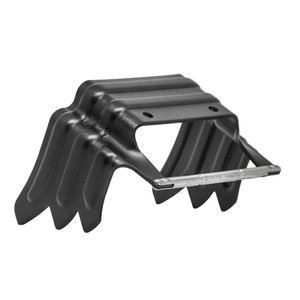Touring Bindings
Ski touring bindings are a crucial part of the backcountry skiing setup, designed specifically for the needs of uphill and downhill skiing in the backcountry. Unlike traditional alpine ski bindings, ski touring bindings allow you to unlock your heel for climbing (which is essential for ascents) and lock it in place for skiing downhill. Here’s a breakdown of what makes ski touring bindings unique:
Key Features of Ski Touring Bindings:
-
Heel Release (for Uphill Movement):
-
The defining feature of ski touring bindings is that they release the heel during the ascent. This allows you to lift your heel while you climb, enabling you to use a free-heel technique (similar to cross-country skiing). This is made possible through a pivoting mechanism that allows your heel to lift, while the toe of the boot stays locked into the binding.
-
-
Locking Mechanism (for Downhill Skiing):
-
When you're ready to ski downhill, the heel locks into the binding, just like in traditional alpine bindings. The locking mechanism is solid and secure, ensuring that you have full control over your skis while descending.
-
-
Weight:
-
Ski touring bindings are usually lighter than alpine bindings to reduce the effort needed for climbing. Some models are designed specifically for long tours or multi-day trips, focusing on minimal weight without sacrificing performance.
-
-
Tech Bindings (Pin Bindings):
-
Tech bindings (also known as pin bindings) are the most common type of ski touring binding. They use small metal pins that click into the toe of the boot, securing the boot to the ski while leaving the heel free to lift during the ascent. Tech bindings are known for their light weight and efficiency.
-
Compatibility: Tech bindings are generally compatible with boots that have a special tech or pin fitting, which is a boot with small holes in the toe area to accept the binding pins.
-
-
Hybrid Bindings:
-
Hybrid bindings combine features from both alpine and touring bindings, offering a compromise between performance for both the climb and descent. These often have a more solid downhill setup than traditional tech bindings but still allow for some flexibility when climbing.
-
-
Step-in / Step-out Mechanism:
-
Many touring bindings use a step-in mechanism that allows you to quickly enter and exit the binding. This can be especially useful when you're on the move and don’t want to waste time fiddling with your bindings.
-
-
Adjustment for Uphill Terrain:
-
Some touring bindings allow you to adjust the riser height (or heel elevator) to make uphill climbing easier. When climbing steep terrain, you can raise the heel of the boot for better leverage and a more efficient stride.
-
-
Brakes vs. No Brakes:
-
Ski brakes on touring bindings are typically designed to stop your skis from sliding away if they come off, but they can add weight. Many lighter, race-focused touring bindings do not come with brakes and instead rely on a leash to secure the skis when unstrapped. Some skiers prefer using brake-less bindings for weight savings.
-
Types of Ski Touring Bindings:
-
Tech Bindings (Pin Bindings):
-
Design: These bindings use two small pins that engage with the boot's toe fittings. The heel is free to rise for the uphill climb.
-
Advantages: Extremely lightweight, efficient for climbing, and provide excellent power transfer for the descent.
-
Disadvantages: Not as robust for aggressive skiing or challenging snow conditions, though newer models have improved downhill performance.
-
-
Alpine Touring (AT) Bindings:
-
Design: These bindings are a hybrid between alpine bindings and touring bindings. They feature a locking mechanism that releases the heel for climbing but provides a more solid downhill setup.
-
Advantages: Better performance and control for aggressive skiing and more technical terrain.
-
Disadvantages: Slightly heavier than pure tech bindings.
-
-
Hybrid Bindings:
-
Design: Hybrid bindings combine the characteristics of alpine and tech bindings. These are typically heavier than pure tech bindings but provide more downhill performance.
-
Advantages: Great for skiers who want the versatility of both climbing and freeride skiing.
-
Disadvantages: Still a bit heavier than tech bindings.
-
-
Race Bindings:
-
Design: Designed for speed and efficiency, race bindings are extremely light and minimalistic. They are perfect for ski mountaineering races but are not ideal for aggressive skiing.
-
Advantages: Ultra-lightweight, great for endurance events and long climbs.
-
Disadvantages: Limited performance for downhill control.
-
Things to Consider When Choosing Ski Touring Bindings:
-
Weight: Lighter bindings make climbing easier but might sacrifice some downhill performance.
-
Downhill Performance: If you plan to ski aggressively or on technical terrain, you'll need a binding that can handle those conditions.
-
Boot Compatibility: Make sure the bindings are compatible with your touring boots (tech bindings, for example, require boots with specific toe fittings).
-
Durability: Depending on the type of terrain you plan to ski on, you’ll want bindings that can stand up to the elements and rough conditions.
Summary:
Ski touring bindings are designed to make backcountry skiing efficient and enjoyable by allowing the heel to lift for uphill travel while providing a secure connection for downhill skiing. Tech bindings are the most popular, but hybrid and alpine touring bindings offer different levels of performance depending on your needs. When choosing bindings, consider weight, performance, and compatibility with your boots.
Are you planning on setting up a touring setup? We can help you find the right bindings based on your skiing style and preferences!




